At first glance, it is clear that the TCL A300 NXTVision aims to be more than just an ordinary television. It offers an image display mode that – unlike its competitors from Korea, Samsung The Frame – is completely free. Additionally, just like its rivals, it comes with freebies. In the packaging, besides the television, we find extra frames mimicking light wood and a flat wall mount, allowing the television to actually resemble a gallery piece. In terms of everyday use, the standout feature is the Google TV system – extensive, quick, and offering access to a vast number of applications. And if we feel like stepping out of the digital museum and jumping straight into the world of gaming, the A300 can surprise us. Two HDMI 2.1 ports, 144 Hz, VRR, ALLM, and very low input lag ensure that even demanding gamers can feel at home here. Well... perhaps except for those who are sensitive to motion blur – as this remains one of the major issues with this model. There are also downsides. Although the image mode is free – and that is worth appreciating – the quality of the available graphics is clearly lacking compared to what Samsung offers in its paid ART Store. The displayed images resemble photos rather than realistic reproductions of artworks. Unfortunately, the A300 – like the rival Hisense S7NQ – performs poorly here and additionally has certain software issues. The brightness of the television itself also leaves much to be desired – it is the darkest television of the entire "frame trio," which translates to average experiences during the day and limited HDR effect. Nevertheless, the TCL A300 NXTVision is quite a reasonable alternative to Samsung The Frame or S7NQ – especially if we are looking for a cheaper solution without additional fees for access to the "gallery" mode and with an operating system that does not limit us in terms of the number of applications. However, it is essential to remember that this is a proposition with a significant amount of compromises. If we want to save a bit and do not expect top-notch picture quality, then the A300 could be a hit in the picture stakes. Otherwise, it is worth taking a look at its competition.
- Matching (Score)
- Our verdict
- TV appearance
- Where to buy
- Contrast and black detail
- HDR effect quality
- Factory color reproduction
- Color reproduction after calibration
- Smoothness of tonal transitions
- Image scaling and smoothness of tonal transitions
- Blur and motion smoothness
- Console compatibility and gaming features
- Input lag
- Compatibility with PC
- Viewing angles
- TV efficiency during daytime
- Details about the matrix
- TV features
- Apps
- Playing files from USB
- Sound
TCL A300W NXTVision vs Hisense U7Q
Direct compare
A300W / A300W PRO / NXTVision
U7Q / U78Q

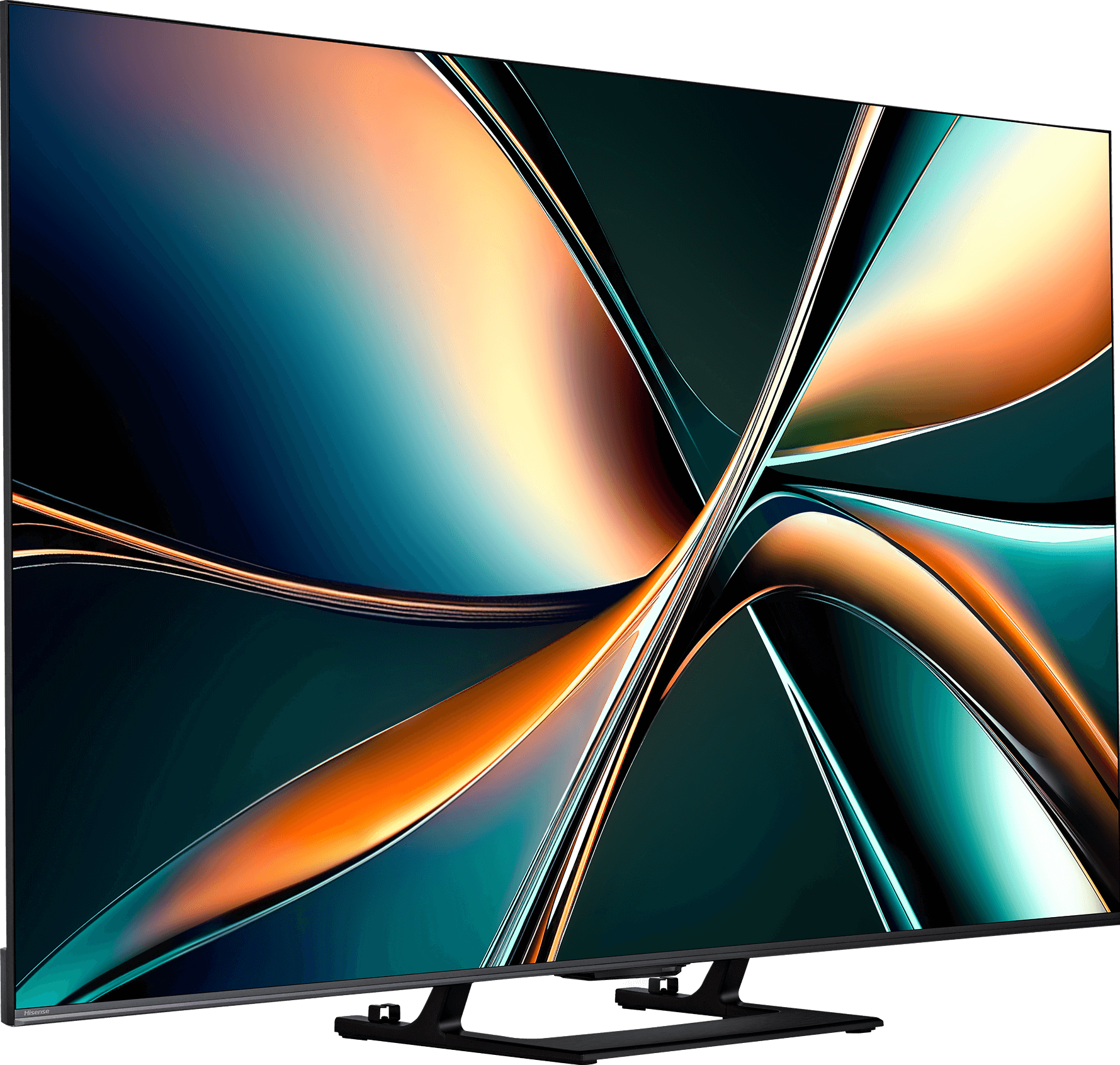
Panel type: LCD VA
Resolution: 3840x2160
System: Google TV
Model year: 2024
Complete the survey to find out the result

Panel type: LCD VA
Resolution: 3840x2160
System: VIDAA
Model year: 2025
Complete the survey to find out the result

Overall rating
6.6
7.2
Movies and series in UHD quality
6.3
6.7
Classic TV, YouTube
6.0
6.8
Sports broadcasts (TV and apps)
5.9
6.5
Gaming on console
8.2
8.0
TV as a computer monitor
8.2
8.6
Watching in bright light
4.7
6.2
Utility functions
7.5
8.9
Apps
9.6
7.7
Sound quality
6.0
7.2
Complete the survey to find out what fits your preferences
Advantages
Frames styled like a picture in the set
Mount included
VA panel with decent contrast
Support for all popular HDR formats, including Dolby Vision and HDR10+
Great for gamers: VRR, G-Sync, ALLM, low input lag
High refresh rate - 144Hz
Free "picture mode"
Support for DTS:X and Dolby Atmos
GoogleTV operating system with the largest app base
Great contrast and deep blacks
Very good fluidity of tonal transitions (close to reference level)
High brightness
Support for 4K 144 Hz and even 240 Hz in Full HD
VRR, ALLM, G-SYNC – a complete package for gamers
Low input lag
Pleasant sound with light bass
Many classic TV features built into the VIDAA system
Disadvantages
Low brightness
Motion blur issues
No recording function on USB or PiP
Inferior image quality in "art mode" compared to Samsung The Frame
Colours and blacks fade significantly under sunlight
No VESA standard
Software bugs
No support for HGiG (makes setting HDR on consoles difficult)
Brightness management issues
Poor viewing angles – typical for VA panels
Closed VIDAA system – lack of certain applications
Our verdict
The Hisense U7Q is one of the most interesting Mini-LED televisions in its price segment, clearly demonstrating that Hisense is beginning to make a mark in the market not only through its price-to-performance ratio but also due to its increasingly refined picture quality. Let's start with what truly impresses: the contrast and black levels are at a level that not long ago was unattainable in this price range. Combined with smooth tonal transitions, solid brightness, and a fast 144 Hz panel, the U7Q becomes a television that excels in both movies and gaming. Gamers will find almost everything they could expect here – variable refresh rate (VRR) support, automatic low latency mode (ALLM), very low input lag, and even 240 Hz in Full HD. All of this makes the U7Q compatible with both next-gen consoles and PCs. However, there are some weaker points. With HDR content, one might say: "untapped potential" – you might ask why? The television, due to its algorithms, dims small bright elements or over-emphasises them, which can ruin the viewing experience. There is also a lack of support for HGiG, a feature that would allow for better calibration of the console with the television regarding HDR. In summary, briefly – the Hisense U7Q is a very versatile and complete television that has its imperfections but makes up for them in many key aspects. For gamers, for the occasional movie viewer, for someone looking for good equipment for everyday use – it is one of the most cost-effective offerings in 2025. You just need to know what compromises you are signing up for – and then it will be hard to be disappointed.
TV appearance







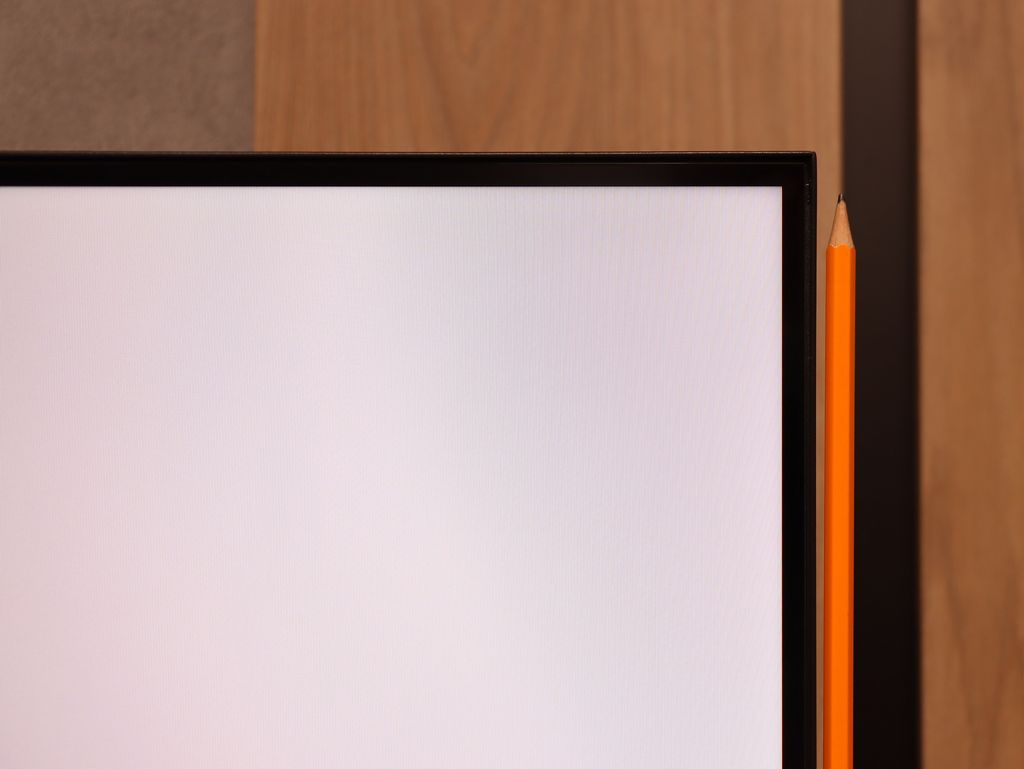
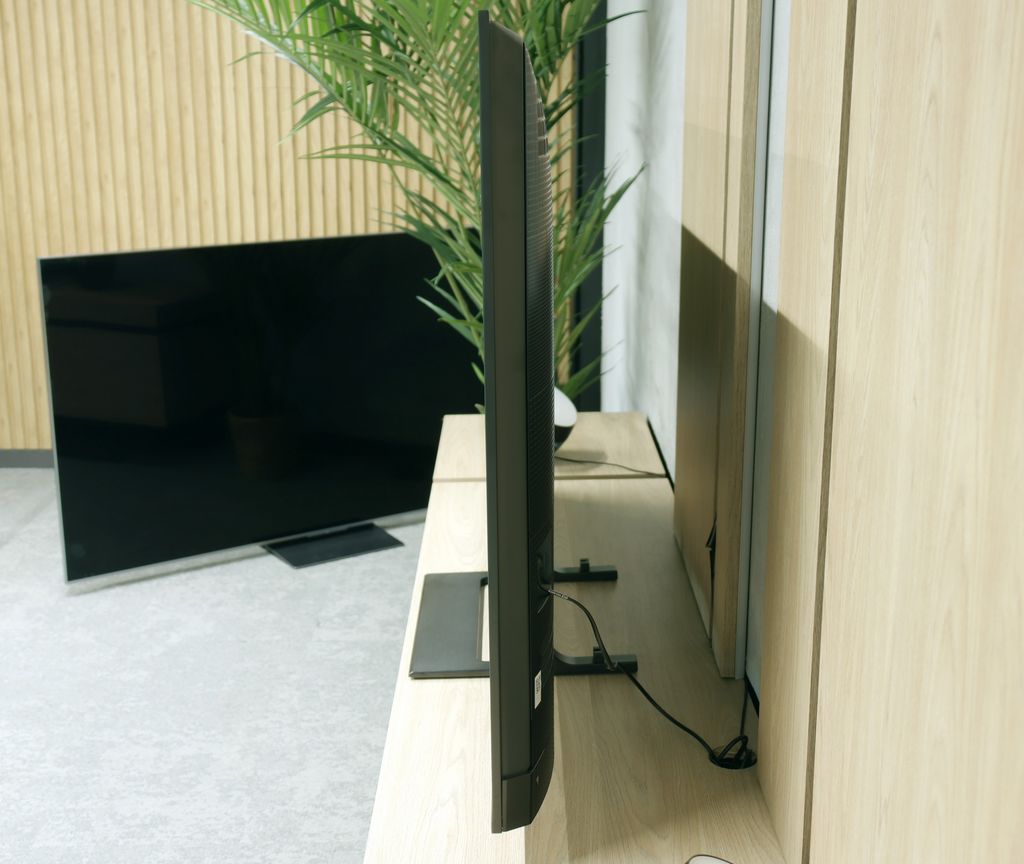
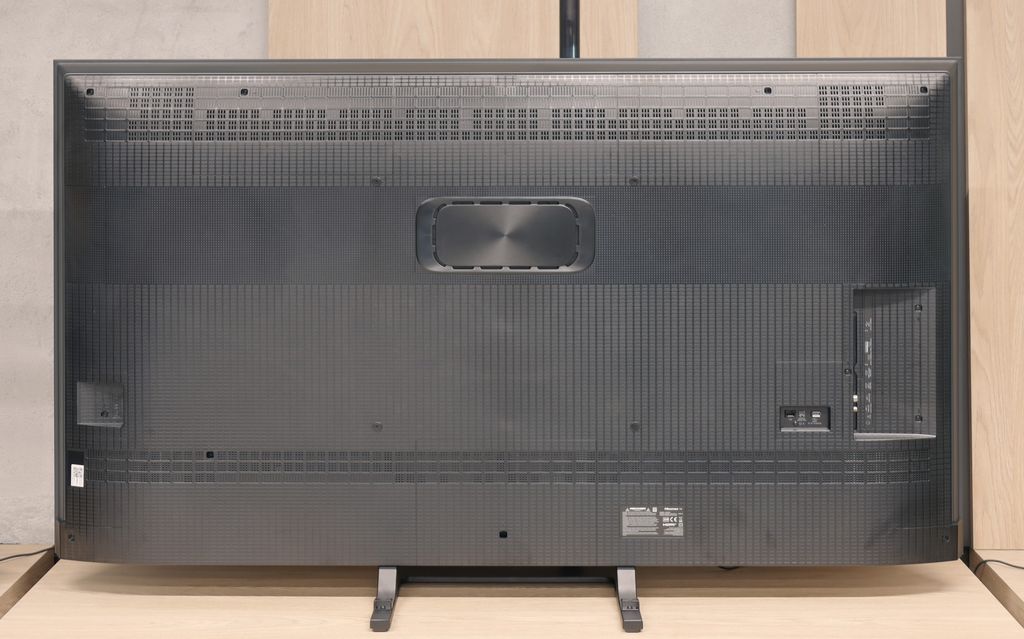
Contrast and black detail
5.5/10
7.5/10
Local dimming function: No
Local dimming function: Yes, number of zones: 220 (10 x 22)
Contrast:

Result
5,000:1

Result
5,450:1

Result
3,800:1

Result
4,000:1

Result
3,950:1

Result
278,000:1

Result
28,800:1

Result
11,100:1

Result
10,800:1

Result
6,250:1
Halo effect and black detail visibility:


The TCL A300, also known as NXTVision, uses a VA panel, so right from the start, one could expect decent contrast. On our test charts, the television indeed showed typical results for this type of panel – in the best case, the contrast reached around 5000:1, which is not a bad result for this segment.
However, it should be noted that the model is not equipped with any local dimming technology, which unfortunately is noticeable in practice. The black levels, though quite deep at times, often lean towards navy blue or grey – especially in darker scenes. In short: for a television without local dimming, it's not bad, but it cannot be compared to models that already have this feature on board.
The U7Q is a television with Mini-LED backlighting – just like the PRO version. The difference? The version without the suffix simply has fewer dimming zones. In our 65-inch model with a VA panel, we counted 220 of them. And although this doesn't make as much of an impression as in the U7Q PRO, it still looks very good on paper for this price range. Alright, but how does it perform in practice? Surprisingly well. The contrast in the U7Q can reach as high as 300,000:1, which gives a really solid black effect. In many scenes, it's hard to find fault – the picture has depth, and the highlights are well separated. Of course, Mini-LED is not OLED – so there are certain limitations. In very challenging scenes with a lot of dark details, the television sometimes either "eats" them, leaving a nice black, or slightly brightens the background, which can cause a halo effect. This is normal in this technology, and one must take it into account. Despite these minor drawbacks – the contrast in the U7Q performs really well.
HDR effect quality
5/10
4.6/10
Luminance measurements in HDR:

Result
357 nit

Result
348 nit

Result
338 nit

Result
350 nit

Result
389 nit

Result
521 nit

Result
160 nit

Result
351 nit

Result
98 nit

Result
674 nit
Scene from the movie “Pan” (about 2800 nits)


Scene from the movie “Billy Lynn” (about 1100 nits)

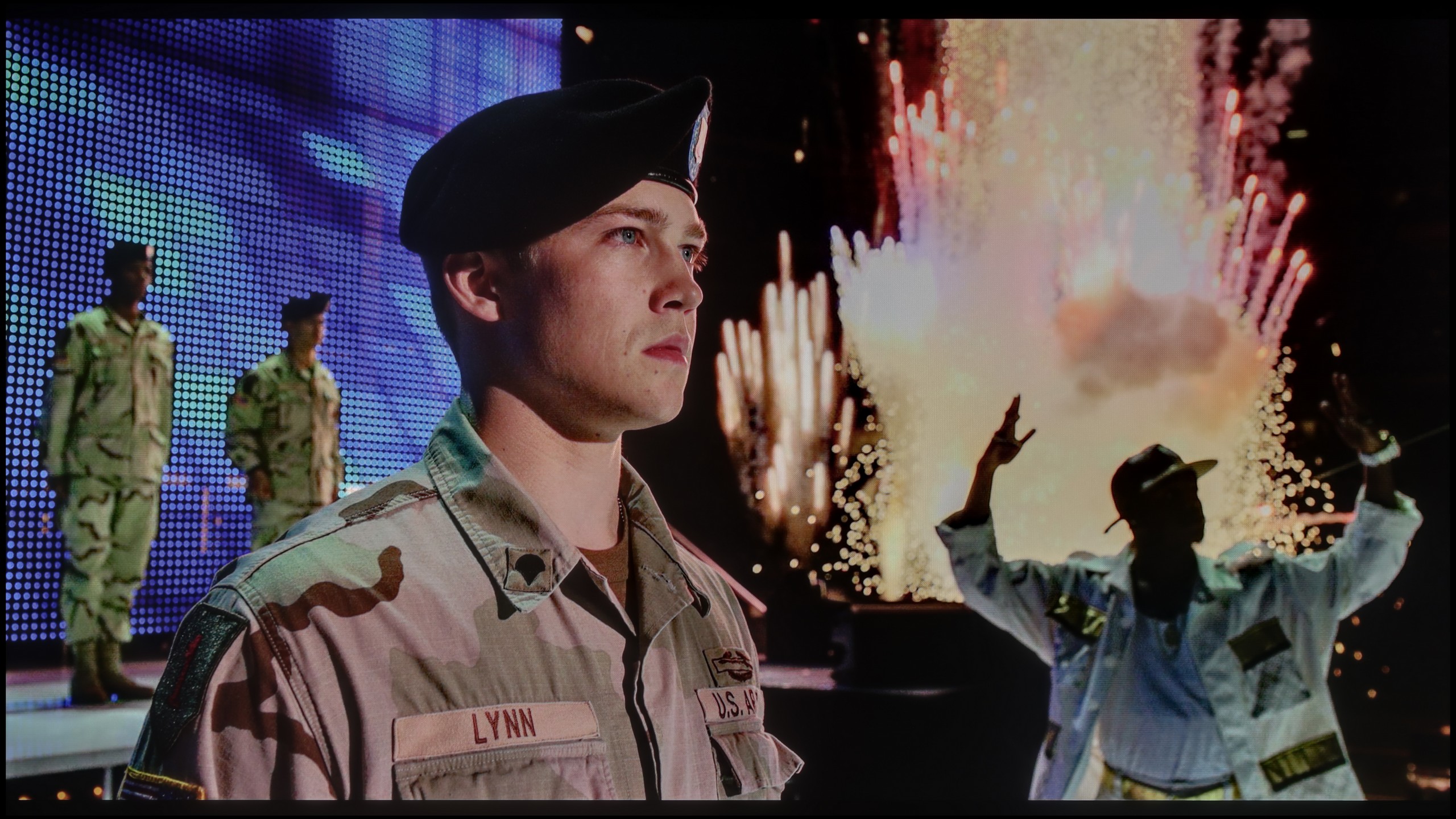
Static HDR10


Dynamic: Dolby Vision
Dynamic: Dolby Vision


HDR luminance chart:
Hisense U7Q
Luminancja HDR
Luminance of RGB colors
TCL A300W NXTVision
Luminancja HDR
Luminance of RGB colors
When it comes to brightness, the TCL A300W is definitely the darkest television among all frame-style models, such as Samsung The Frame or Hisense CanvasTV – and unfortunately, this is immediately noticeable. In our measurements, the peak luminance reached a mere 400 nits, and on test film patterns, this value dropped to 350 nits. This is definitely too little to experience the true “magic” of bright HDR effects. As a consolation – the television is equipped with a PFS LED coating (which is something like QLED), providing very good coverage of a wide colour gamut, both DCI-P3 and BT.2020. In addition, it has full support for all popular HDR formats – HDR10, HDR10+, HLG, and Dolby Vision – which somewhat compensates for the lack of brightness and helps improve the overall perception of content in this quality.
Since the algorithms responsible for blacks are performing quite well, we expected a similarly good effect regarding brightness and overall HDR quality. Unfortunately – here we have to disappoint you a bit.
The U7Q is a sufficiently bright television – under the best conditions, it can achieve around 800 nits, which indeed impresses on some scenes, especially in scenes like those from the film The Meg. Bright areas can shine, and the HDR effect is noticeable. The problem arises when there are very small, bright elements on a dark background – for example, in Sicario 2 or in the second scene from the film Life of Pi. In such moments, the dimming algorithms work too aggressively. Yes, the blacks look great then, but the brightest points can almost completely disappear, causing the HDR effect to vanish and the details to be barely visible. It's just the nature of this technology in this price segment.
As a consolation, it's worth mentioning that the U7Q is marketed as QLED (in practice, a PFS layer is used, which works very similarly), and it is indeed capable of displaying a wide colour palette – a DCI-P3 coverage of around 94% is a very good result for this class.
Factory color reproduction
5.9/10
6.3/10


Factory Mode
After calibration
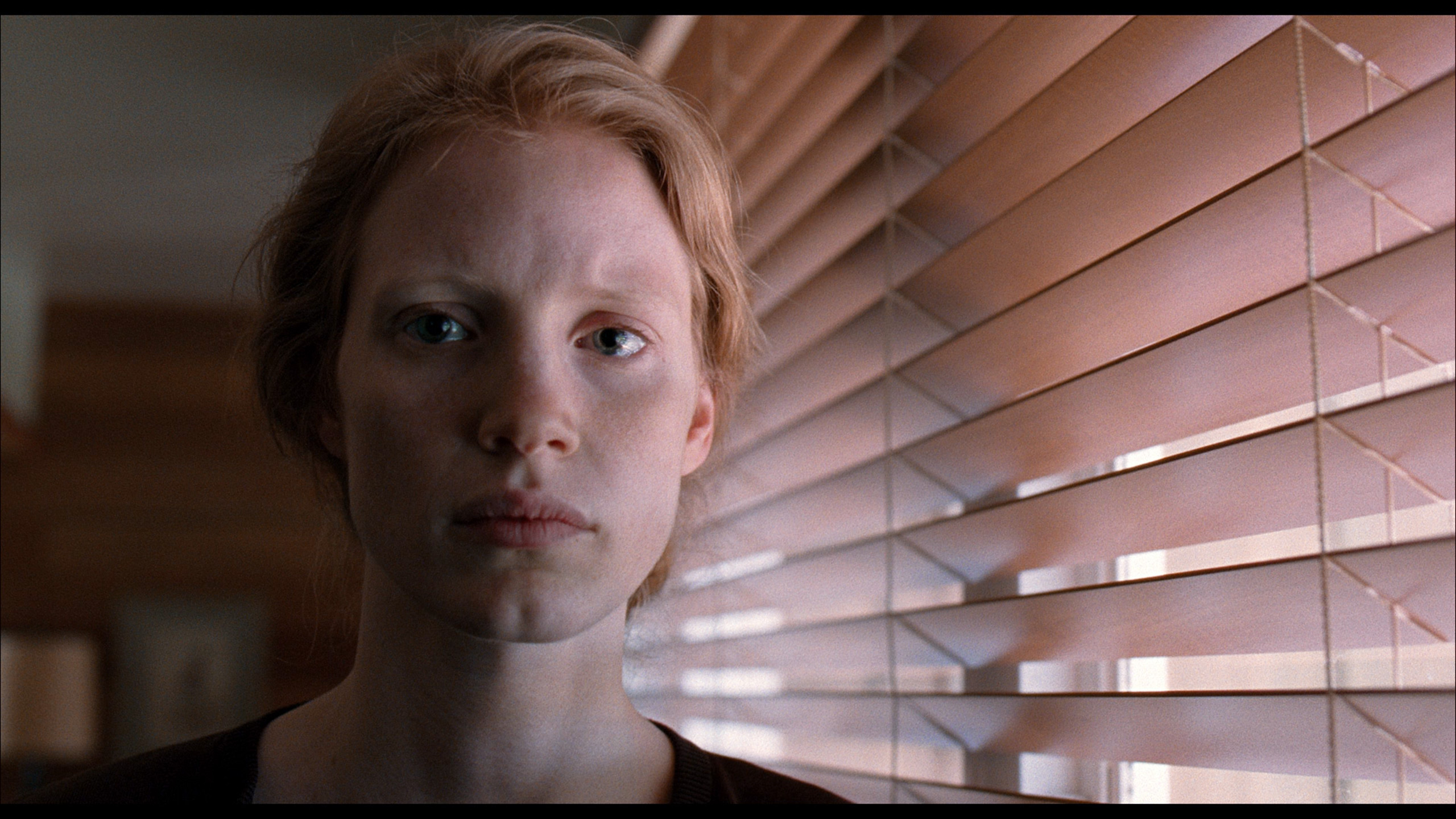
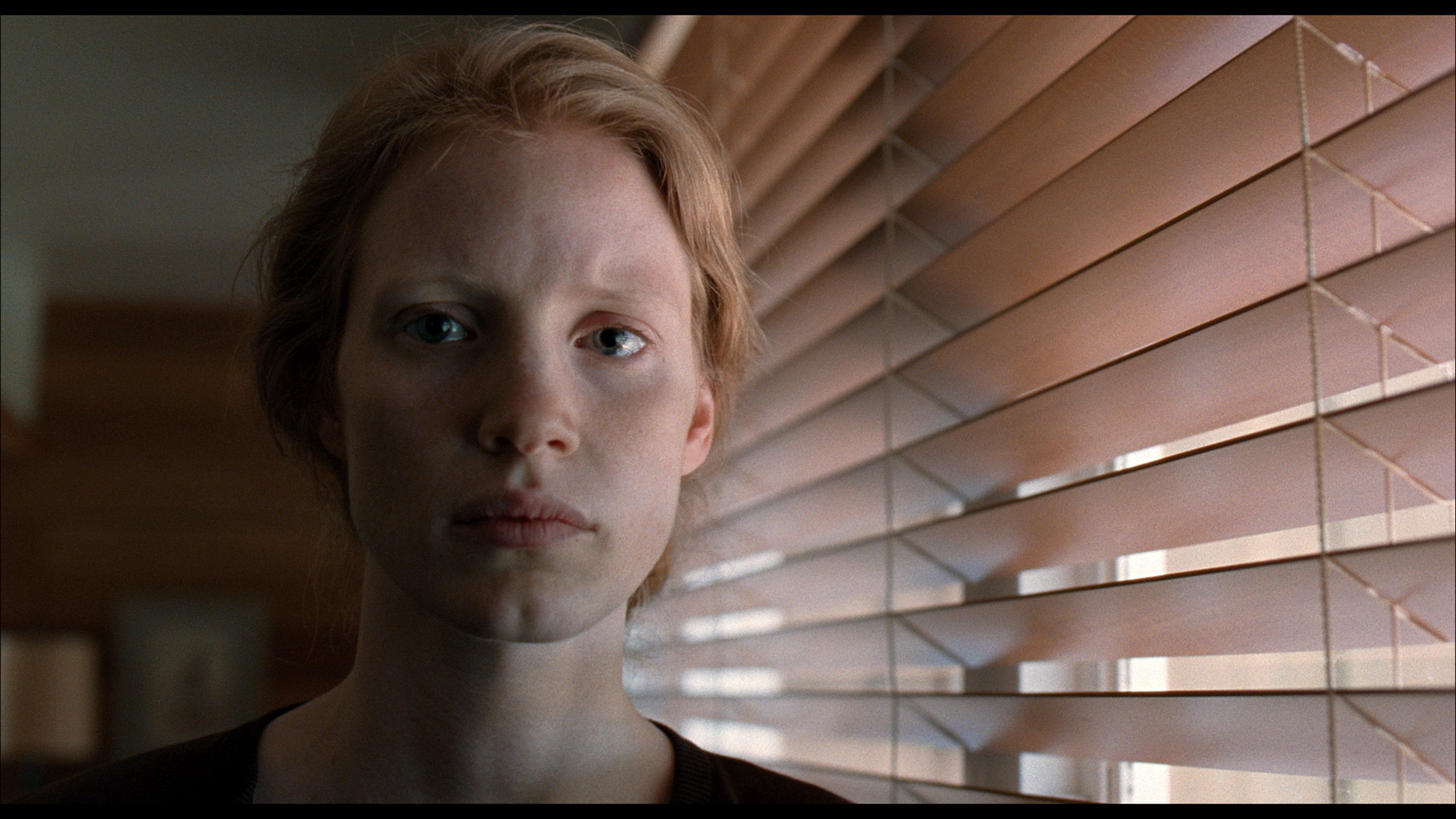
Factory Mode
After calibration
TCL A300 offers several picture modes, but without a doubt, the best is the movie mode. Unfortunately, although it is the best option available, it is not free from errors. In both HD and HDR content, the image has a noticeably too warm hue - it leans slightly towards pink, which is particularly noticeable in scenes with snow. Instead of pure white, we get a pinkish tint that spoils the natural perception of colours.
The management of brightness is also not very good. In the case of older HD material, the image often seems too dark - which is confirmed by the inflated gamma value. Conversely, with HDR content, the effect is the opposite - the image is overly bright, which we observed in scenes from the film Pan. Such a lack of consistency also affects the accuracy of colour reproduction - a test with the ColorChecker showed that many samples clearly deviate from the reference values.
Fortunately, TCL allows for manual adjustment of settings, so we decided to check how the television would perform after our professional calibration. The effects of this adjustment are described below.
We tested the U7Q in the best possible picture mode, which is Filmmaker Mode. This is the mode that is supposed to provide the most "filmic" and creator-intended experience – right out of the box. Unfortunately… even this professionally sounding name does not guarantee a perfect picture.
In our unit, the problem lay in the incorrectly set white balance. Both in HD and 4K content, the picture had too much blue and red, which caused the screen to take on a slightly rosy tint. It didn't look terrible, but it was noticeable – especially in bright scenes and white backgrounds. This alone could perhaps be forgiven, but the biggest problem is managing brightness in HDR content. The EOTF curve from measurements confirms what we saw earlier during scene tests: the television can overly darken the smallest bright elements, causing them to nearly disappear, or on the contrary – excessively brighten the brightest ones, which affects the naturalness of the picture.
Color reproduction after calibration
8/10
7.4/10

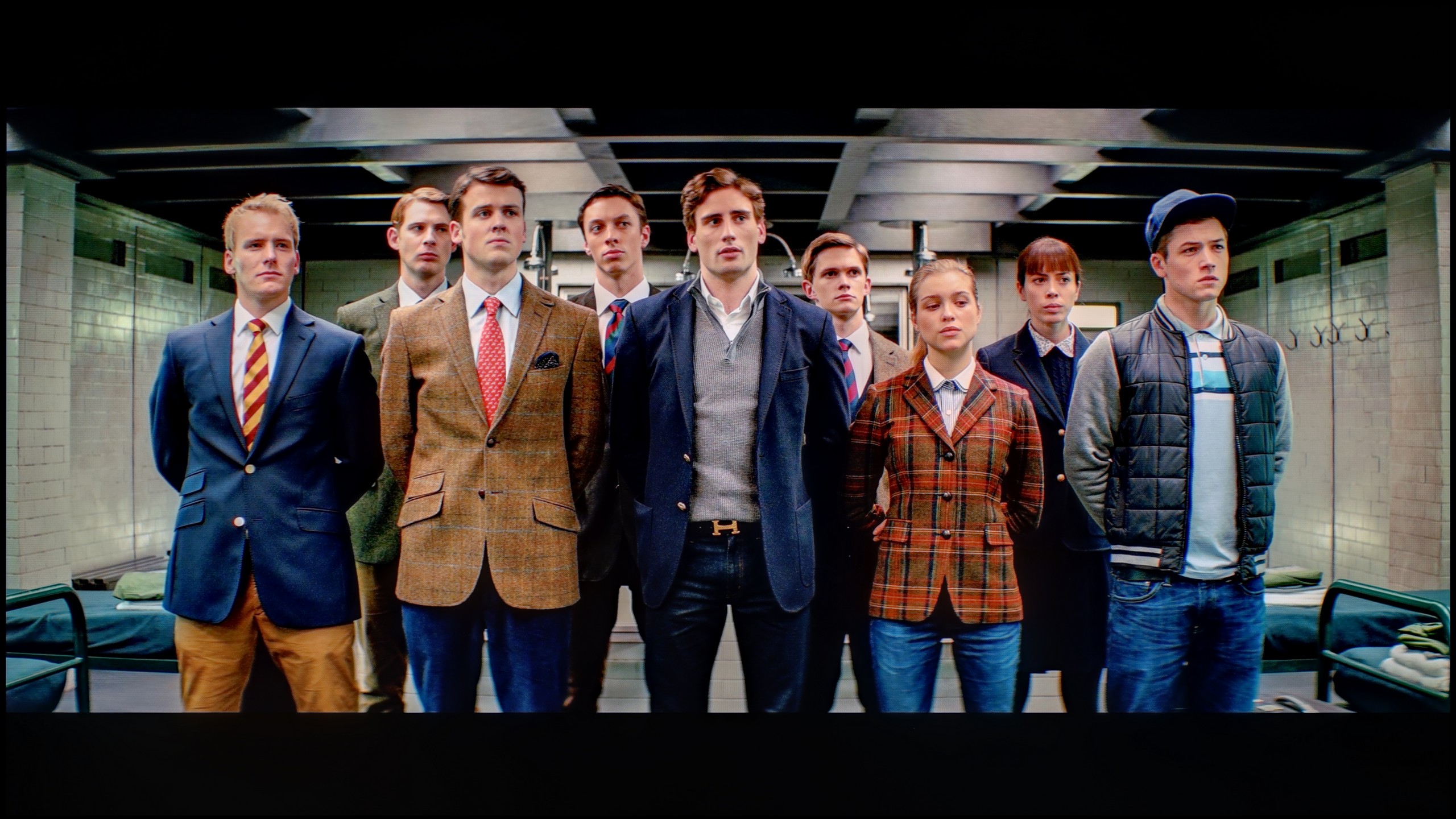

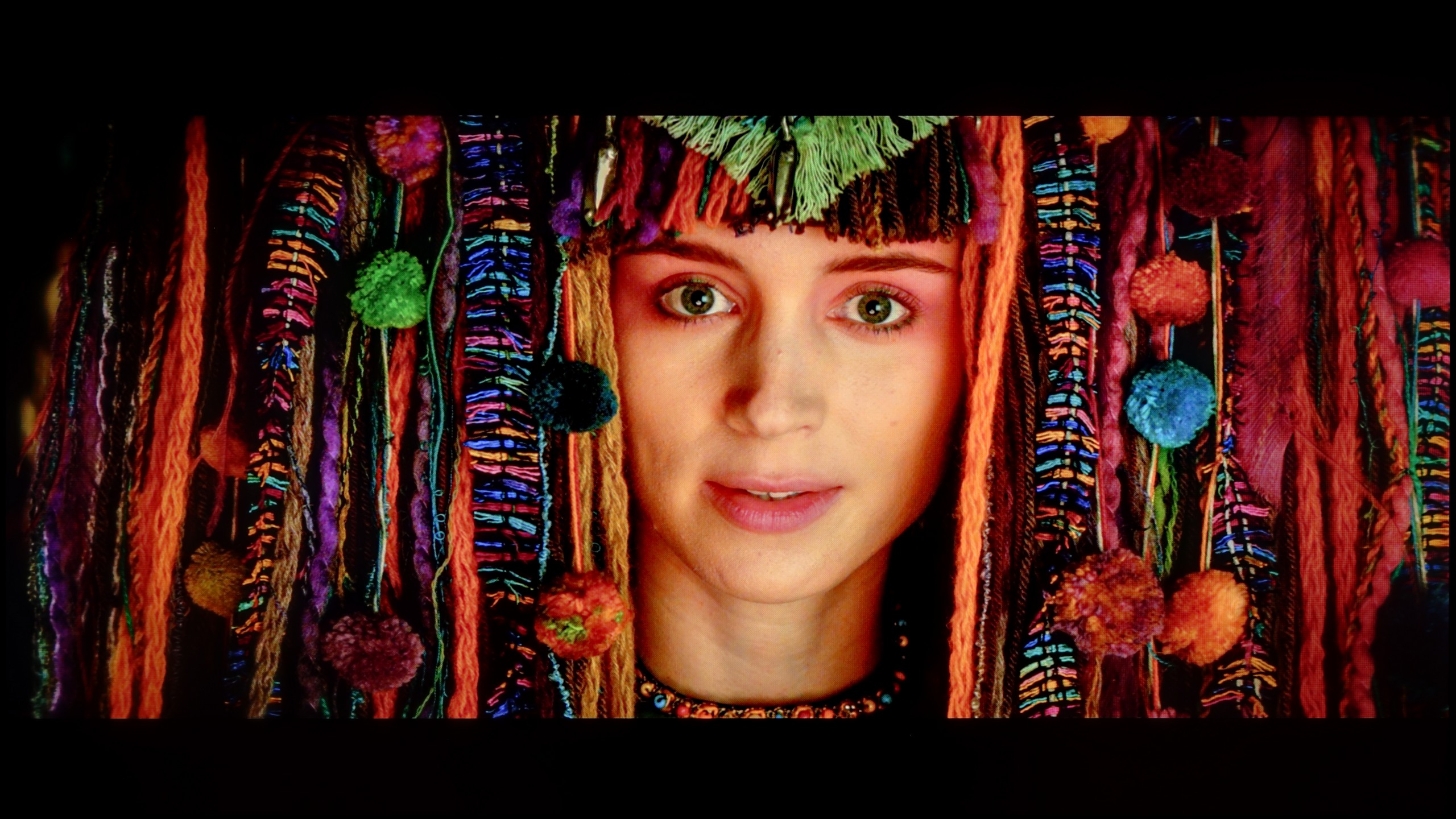
After our professional calibration, the TCL A300 has literally received a new lease of life. The image has stopped being too warm, and the colours finally look as they should – which was confirmed by the ColorChecker test, where the colour samples finally started to hit their marks, at least to some reasonable extent. It was also possible to partially correct the brightness management – the image is now more balanced and less "wobbly" between different types of content. Of course, certain limitations cannot be overcome – a slightly noticeable blooming effect is still present, but that is a characteristic of the technology and not something that can be eliminated even after professional settings.
Generally speaking: after calibration, the A300 performs significantly better and gains a completely new quality.
Thanks to specialised tools, we managed to correct the colour quality in SDR content to nearly perfection. In materials with lower dynamic range, the delta E errors dropped below 0.5, which can be regarded as an almost reference result. The picture on television, YouTube, or classic Full HD looks really very good after calibration. Alright – but where did we not manage to improve the image so easily? Primarily, it concerns HDR quality content. Although we managed to somewhat 'tame' the white balance and eliminate pink tints in most scenes, unfortunately, we no longer had full control over brightness management. We set the local dimming settings according to the best observations – SDR: Medium, HDR: High – but the U7Q still did everything a bit its own way. There were still cases of excessive dimming or brightening of details that calibration simply could not eliminate. And although the overall reception of the content is significantly better, one must reckon that the U7Q will always have something to say at the end with an 'but'.
Smoothness of tonal transitions
8.6/10
9.9/10





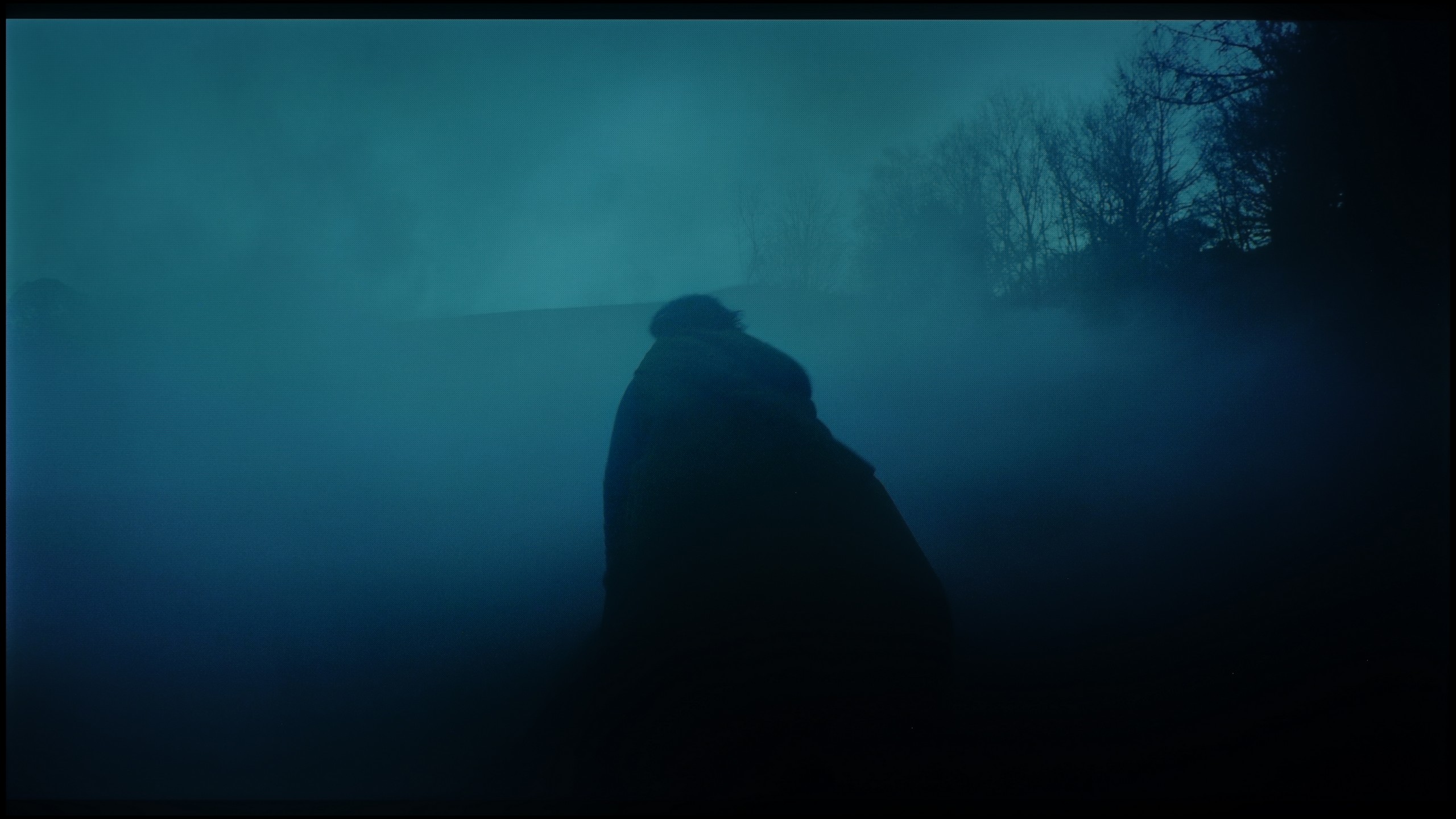






TCL A300 NXTVision is another frame-style television that handles transitions of tones really well. It's hard to find distinct bands or sharp transitions between shades of the same colour – the overall appearance is natural and smooth.
However, it must be admitted that among the three tested models (The Frame and S7NQ), TCL performs the worst in this category. In darker and lighter scenes, slight imperfections can be noticed. Nonetheless, looking at it as a whole, for a television in this price range – it presents itself really solidly. It may not be the best of the bunch, but it maintains a very good level.
The U7Q performs remarkably well when it comes to tonal transitions – we can confidently say that it is at an almost reference level, which is why this television receives one of the highest possible ratings in this category from us. Colour blending is smooth, clean, and without visible bands. In the majority of scenes, everything looks simply perfect, and any minor imperfections may only appear in very specific shots – although we hardly noticed any during our tests.
Image scaling and smoothness of tonal transitions
5.5/10
6/10
Smooth transition function

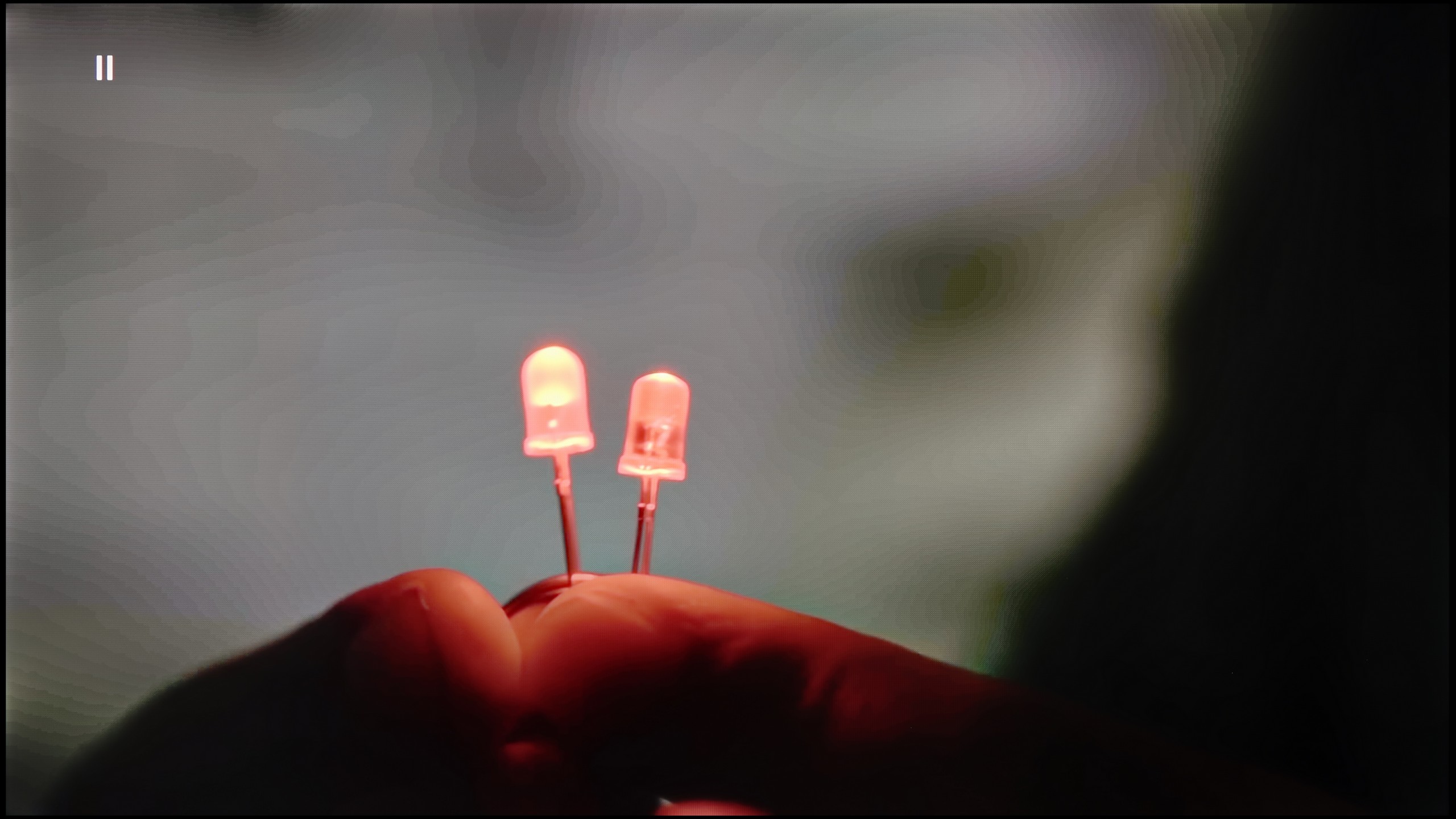
Image without overscan on the SD signal


TCL A300 handles tonal transitions in high-quality films very well, but the question arises – how does it perform with weaker material? The television is equipped with a tonal transition smoothing function, but its effectiveness can be described in one word: "random." In one scene it could work and improve the gradation, but when turned off… the effect remains the same. There is a lack of consistency and predictability.
Image scaling is also not one of A300's strong points. On the test chart, the main character actually looked better than on the raw signal, but with thin lines – such as fonts or background details – there was noticeable jaggedness and aliasing. On the positive side, the television does not crop the image and has no problems with overscan, but the overall quality of scaling is rather average.
There are situations where we would like to smooth out tonal transitions a bit, especially in older materials – those with limited source quality. The U7Q is equipped with a feature called "Smooth and Gradient Image," but unfortunately... it works very poorly. In the "Low" option, the effects are practically unnoticeable, and other settings smooth details but do not improve tonal transitions. The only positive aspect is that the feature does not interfere with film grain, so it does not ruin the natural structure of the image.
Fortunately, upscaling content performs quite well. The image is not excessively sharpened, and there is no artificial clarity – and although it is known that this is not the level of high-end televisions, the U7Q handles displaying really old content in a completely acceptable manner without any issues.
Blur and motion smoothness
6.4/10
7.5/10


Blur (native resolution, maximum refresh rate):




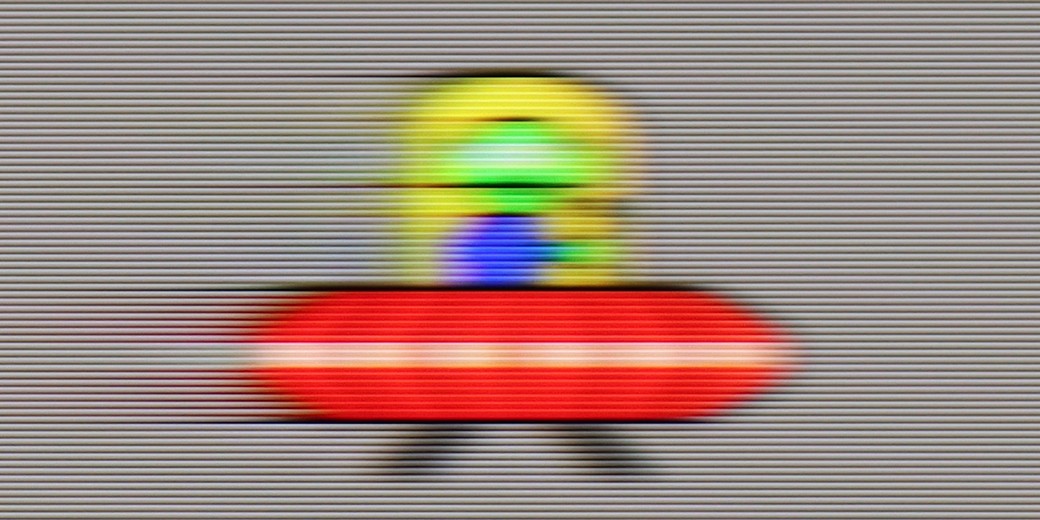
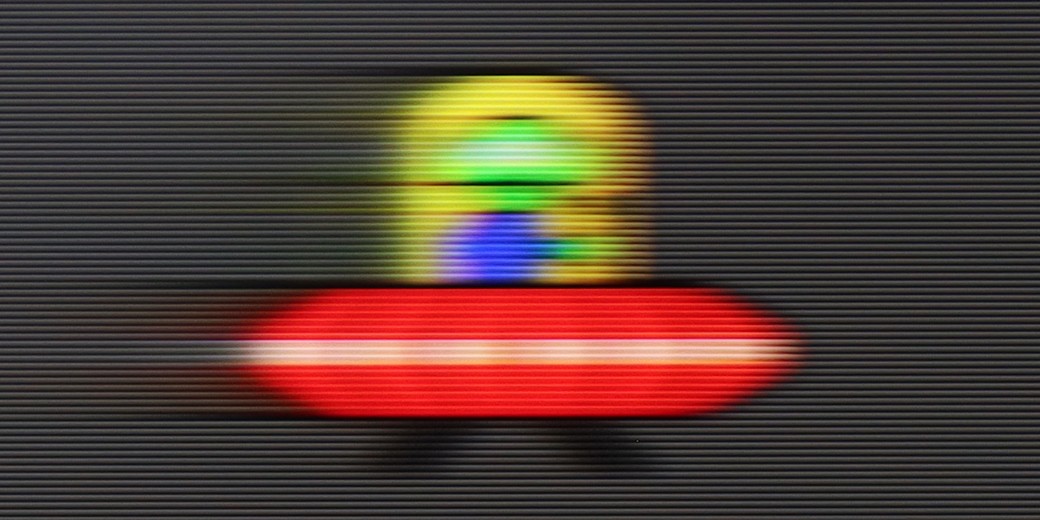
Blur (BFI function enabled):



Smużenie ():
Smużenie (1080p 240Hz):

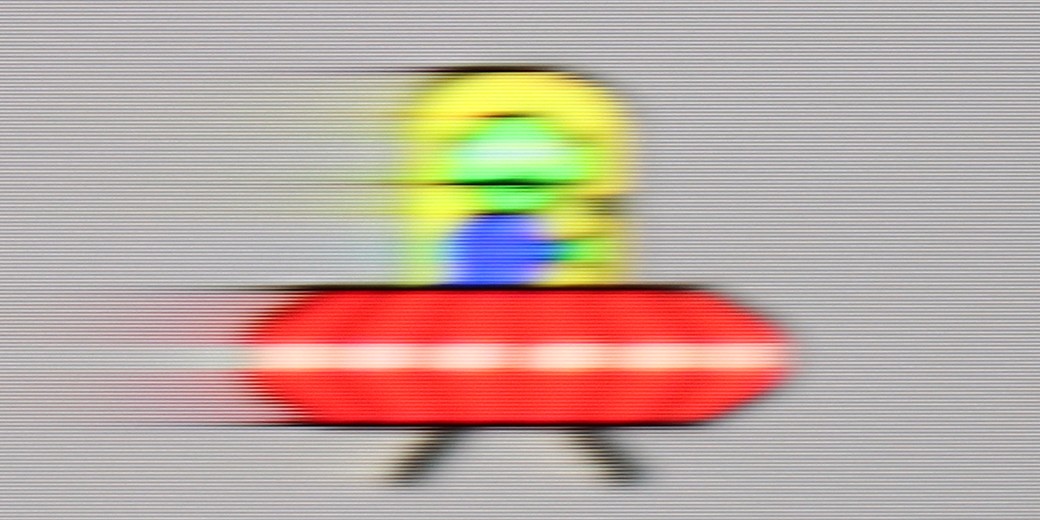
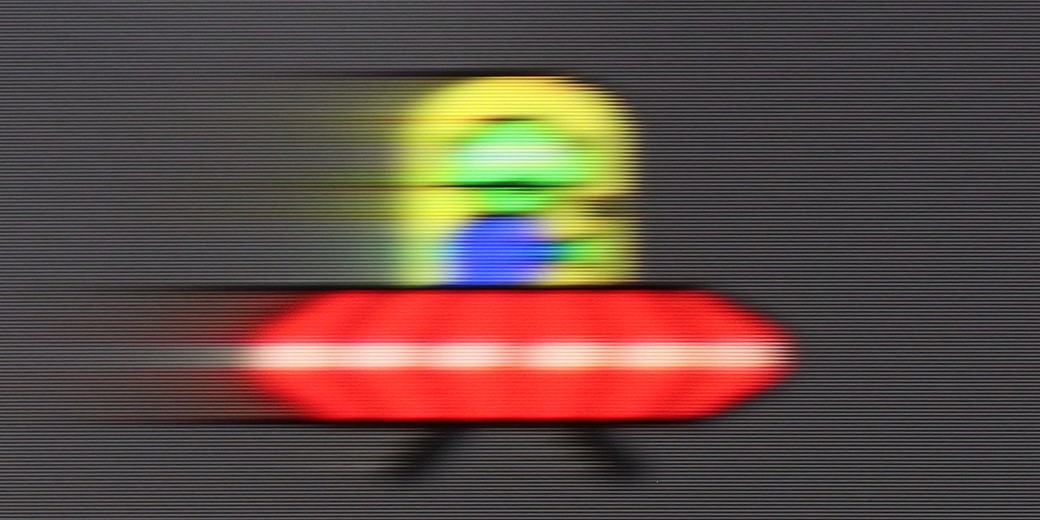
The TCL A300 is equipped with a 144 Hz panel, which should immediately satisfy practically everyone – both gamers and sports fans. The motion is smooth and the image is clear even during fast-paced scenes. Additionally, the television offers motion enhancement functionality called "Motion," where we find two sliders on a 10-point scale. These allow you to adjust the effect to your own preferences – from a classic, cinematic look with visible frames to a very smooth (though somewhat unnatural) image reminiscent of soap opera effects. This way, everyone can find a setting that suits them.
U7Q is indeed a very fast television, just like its more powerful version "PRO". At a resolution of 4K, it supports up to 144 Hz refresh rate, and if someone wants even more – in Full HD, you can achieve up to 240 Hz! This will mainly benefit PC gamers, but it is worth appreciating – it is a rarely seen feature in this price segment. Right from the start, it is clear that the U7Q has been designed with dynamic content in mind, such as games or sport. In films, we are not left "out in the cold" either – the U7Q offers an "Ultra Motion Smoothness" feature, where using two sliders you can adjust whether you prefer a smoother, theatrical image or something closer to a cinematic style with a visible film frame. It is good that, as with most manufacturers, we have a choice here as well and can adjust it to our own preferences.
Console compatibility and gaming features
9.8/10
8.5/10
- ALLM
- VRR
- VRR range48 - 144Hz48 - 240Hz
- Dolby Vision Game Mode
- Correct implementation of HGIG
- 1080p@120Hz
- 1440p@120Hz
- 4K@120Hz
- Game bar



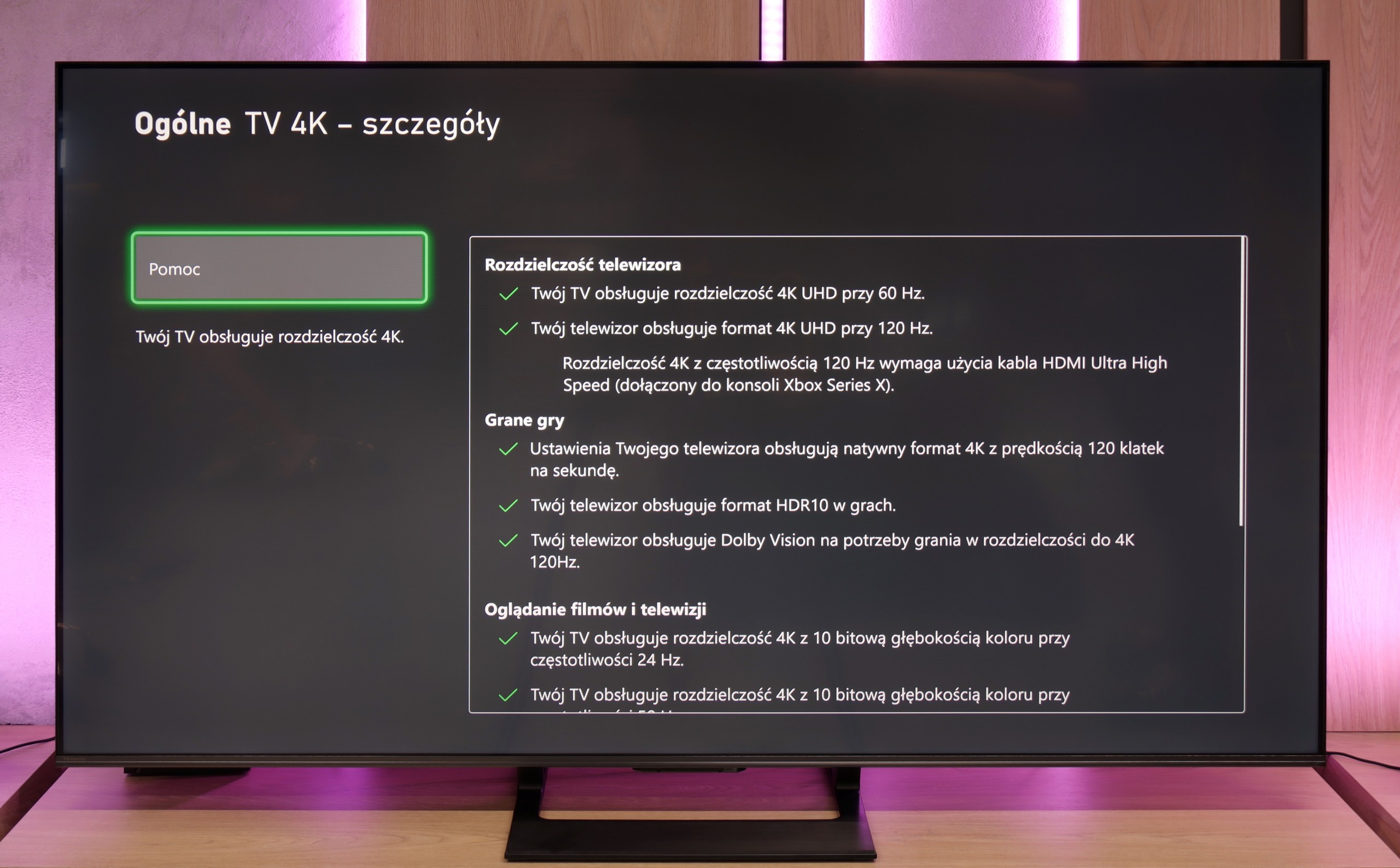



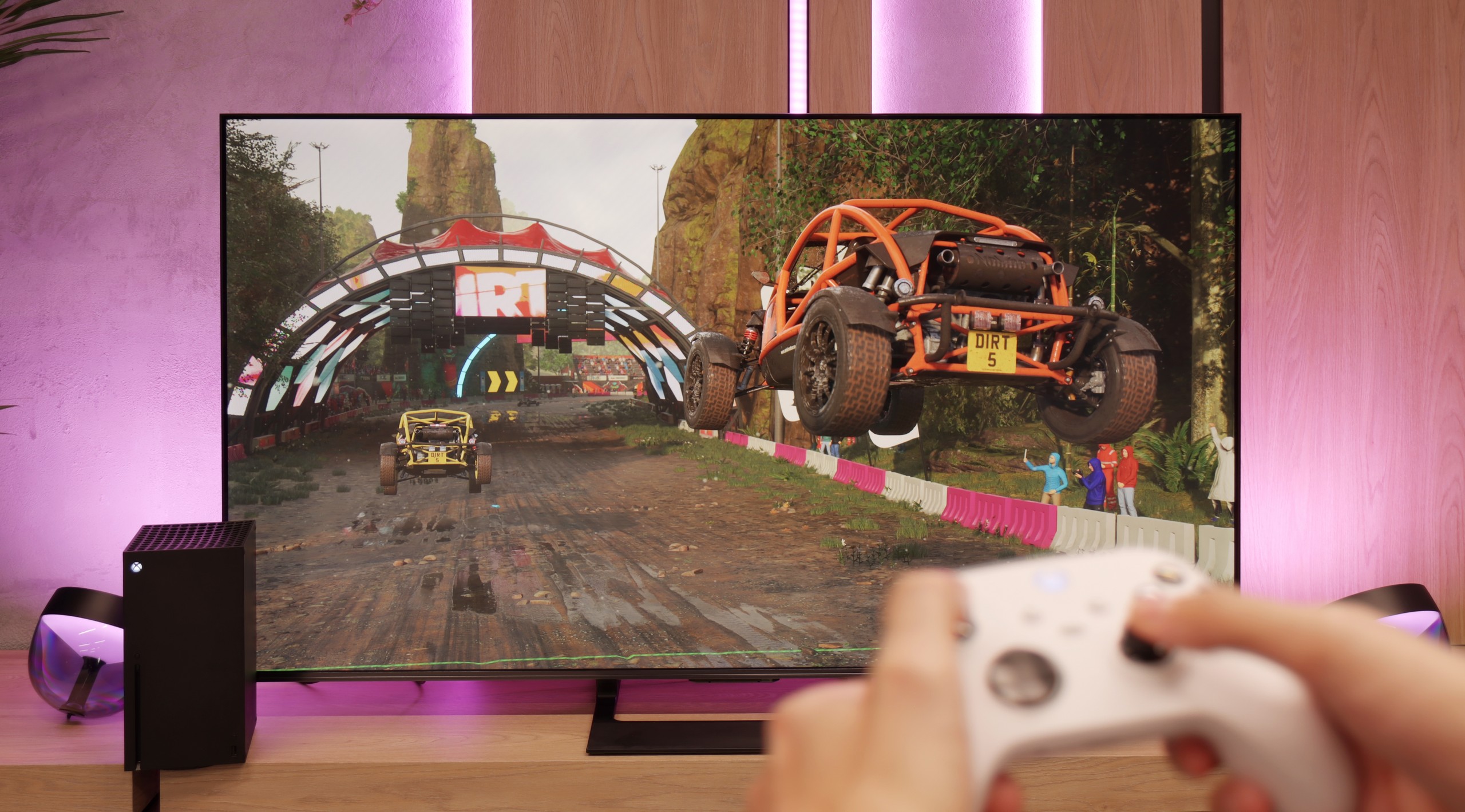
TCL A300 is a television designed not only to transport us to a digital art museum but also to a full-fledged gaming world. Here, we find practically everything one could expect from gaming equipment: two full-bandwidth HDMI 2.1 ports, 144 Hz refresh rate, VRR support, and ALLM.
The proper implementation of the HGIG mode also deserves praise – something that competitor Hisense sometimes struggles with. The television easily handles lower resolutions (e.g., Full HD) while maintaining high refresh rates, which older console or PC owners will appreciate.
In addition, there is an attractive and clear GameBar that facilitates quick access to settings for gamers. The A300 is really well-prepared for top-level gaming – it's just a shame that issues with smearing slightly tarnish its overall image as a gaming device.
The Hisense U7Q is a television designed with gamers in mind – and this is immediately evident from its gaming capabilities. It has practically everything you could wish for: variable refresh rate (VRR) – check, automatic game mode (ALLM) – check, and on top of that, high refresh rates of up to 240 Hz in Full HD and support for various resolutions, not just 4K. This is truly a great set of features that makes the U7Q perform well both in fast-paced first-person shooters on consoles and in more demanding titles on PC. Of course – as with most Hisense models – there is a lack of proper implementation of the HGiG feature. It's a shame because HGiG allows console brightness to be matched to a specific television, which in practice makes displaying HDR games according to the creators' intent much easier. Without this, you simply have to reckon with certain limitations in the final HDR image in games.
Input lag
9.7/10
9.7/10
SDR
HDR
Dolby Vision
In terms of input lag, the TCL A300 performs really well. Values below 10 ms at a refresh rate of 120 Hz are something many gamers dream of – such low lag is practically unnoticeable, both during everyday gaming and in more demanding e-sports titles. One might criticise the result of 23 ms in Dolby Vision mode at 60 frames, but it is still a sufficiently low value that it's hard to have serious objections. In this category, the A300 really excels.
The input lag on the U7Q is really impressive. With 120 Hz content, we measured around 9 ms, and with 60 Hz – around 17 ms. These are exceptional results that make the television excellent for even dynamic games requiring quick reactions. It's hard to criticise anything here. Of course, as is often the case, the Dolby Vision mode in games seems to be a bit slower compared to classic SDR or HDR. This will be particularly noticeable for users of Xbox Series X/S consoles, which are the only ones supporting Dolby Vision Gaming. Fortunately, the input lag remains below 30 ms, so in practice, this is still an acceptable level even for more demanding gamers.
Compatibility with PC
8.2/10
8.6/10

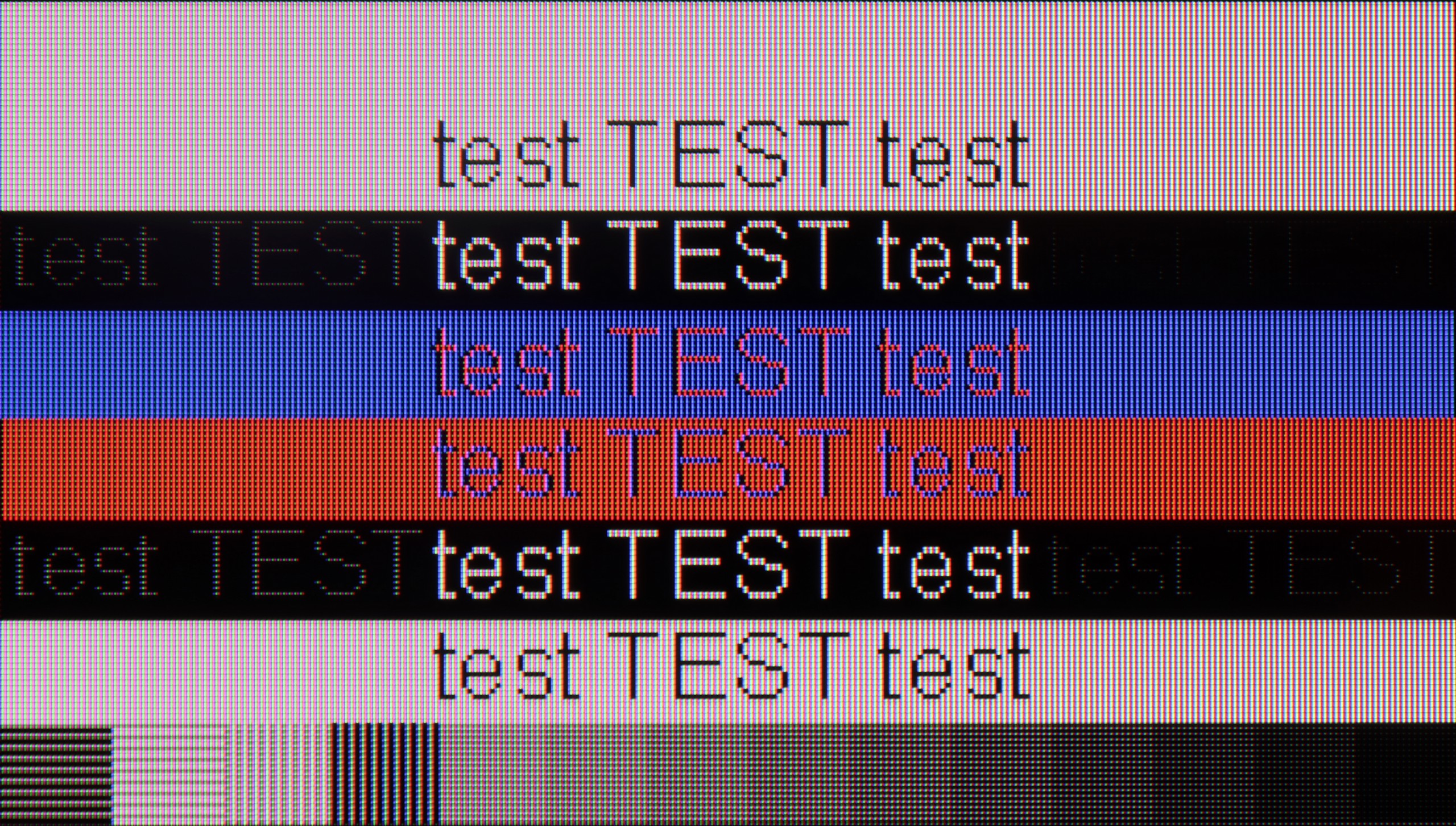
If we plan to use the TCL A300 as a monitor for a computer, we may be pleasantly surprised. The television performs really well in this role. It is equipped with a 144 Hz panel, supports G-Sync, and, as we have already mentioned, offers very low input lag, so gaming on it with a connected PC is a pure pleasure.
Working with text is also possible, though with some limitations. The TCL A300 has slight issues displaying dark fonts and thin lines – this stems from the subpixel structure, which in everyday use can be somewhat bothersome, although it looks better in photos than in reality.
The television supports chroma 4:4:4, but only up to 120 Hz. Therefore, we have indicated that this feature is available, but with a limitation – if we care about perfectly readable fonts, it is advisable to stick to a refresh rate of 120 Hz. At 144 Hz, the sharpness of the text may suffer slightly.
The U7Q communicates excellently with the computer. For gamers, this is great news – we have high refresh rates, low input lag, and G-SYNC support, making gameplay from a PC pure enjoyment. But the U7Q also performs well in everyday tasks. If someone uses the computer for word processing, browsing the internet, or office work – there’s nothing to complain about. The TV correctly handles chroma 4:4:4, so fonts look sharp and clear, without blurriness or odd contours. Both small and capital letters are simply readable – just as it should be.
Viewing angles
3.2/10
3/10
The viewing angles on the TCL A300 NXTVision are – let's be honest – mediocre. The television is equipped with a VA panel, which inherently has rather limited angles and unfortunately this is evident here. The video below speaks for itself – even a slight deviation from the axis results in a noticeable drop in contrast and colour saturation. It's a shame that this is yet another frame-style television that has done absolutely nothing about it. After all, we don't always have the opportunity to sit perfectly straight on – especially if the device is also intended to serve a decorative function in the living room.
The viewing angles on the U7Q are rather poor – this is simply characteristic of VA panel qualities. Directly in front, everything looks very good: blacks are deep, colours are saturated, and contrast is high. However, just moving slightly to the side causes the picture to start losing quality – colours become washed out, and blacks begin to resemble dark grey. Compared to televisions with IPS panels, the U7Q performs worse, although on the other hand, it makes up for it with better contrast and deeper blacks.
TV efficiency during daytime
4.7/10
6.2/10

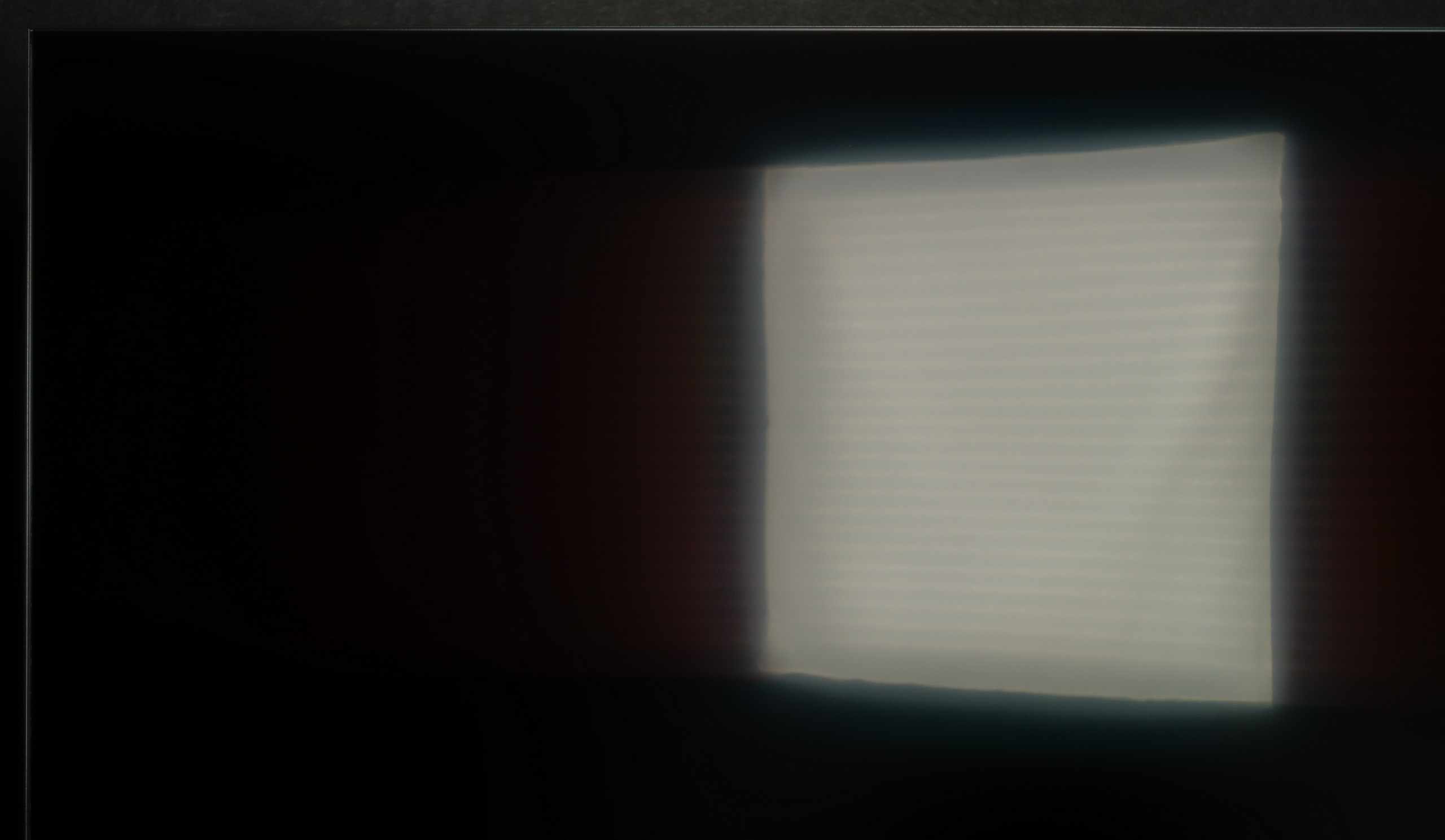

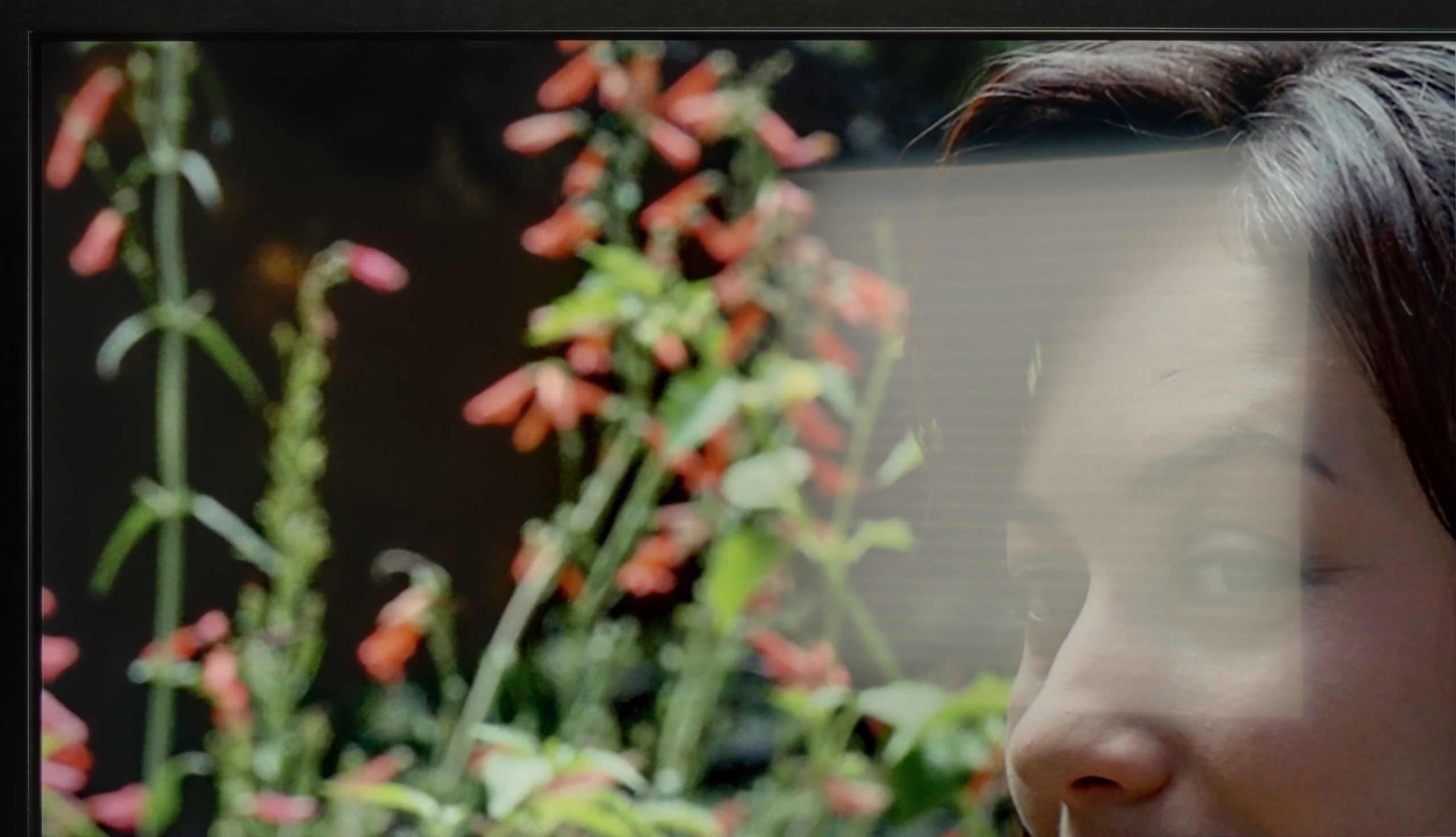
Matrix brightness
Average luminance SDR
Hisense U7Q: 519 cd/m2
TCL A300W NXTVision: 388 cd/m2
The TCL A300 NXTVision is equipped with a matte panel very similar to the one found in one of its Chinese competitors – the Hisense S7NQ model. Such a surface handles reflections fairly well, although it must be said that it performs worse than Samsung's The Frame, which offers a significantly higher level in this regard. As is often the case with matte displays, blacks lose their depth during the day and appear more gray than black – and this is no different here. Unfortunately, the fact that the A300 is the darkest television of the three tested does not help either. As a result, it has a real problem standing out in brightly lit rooms.
The U7Q performs quite well in a sunlit room. The brightness in SDR mode averages around 520 nits, which practically means that even on a sunny day, it is easy to comfortably watch television – without the feeling that everything is drowned in reflections. Additionally, thanks to the satin coating on the panel, the television does a good job of suppressing reflections.
Details about the matrix
Subpixel Structure:
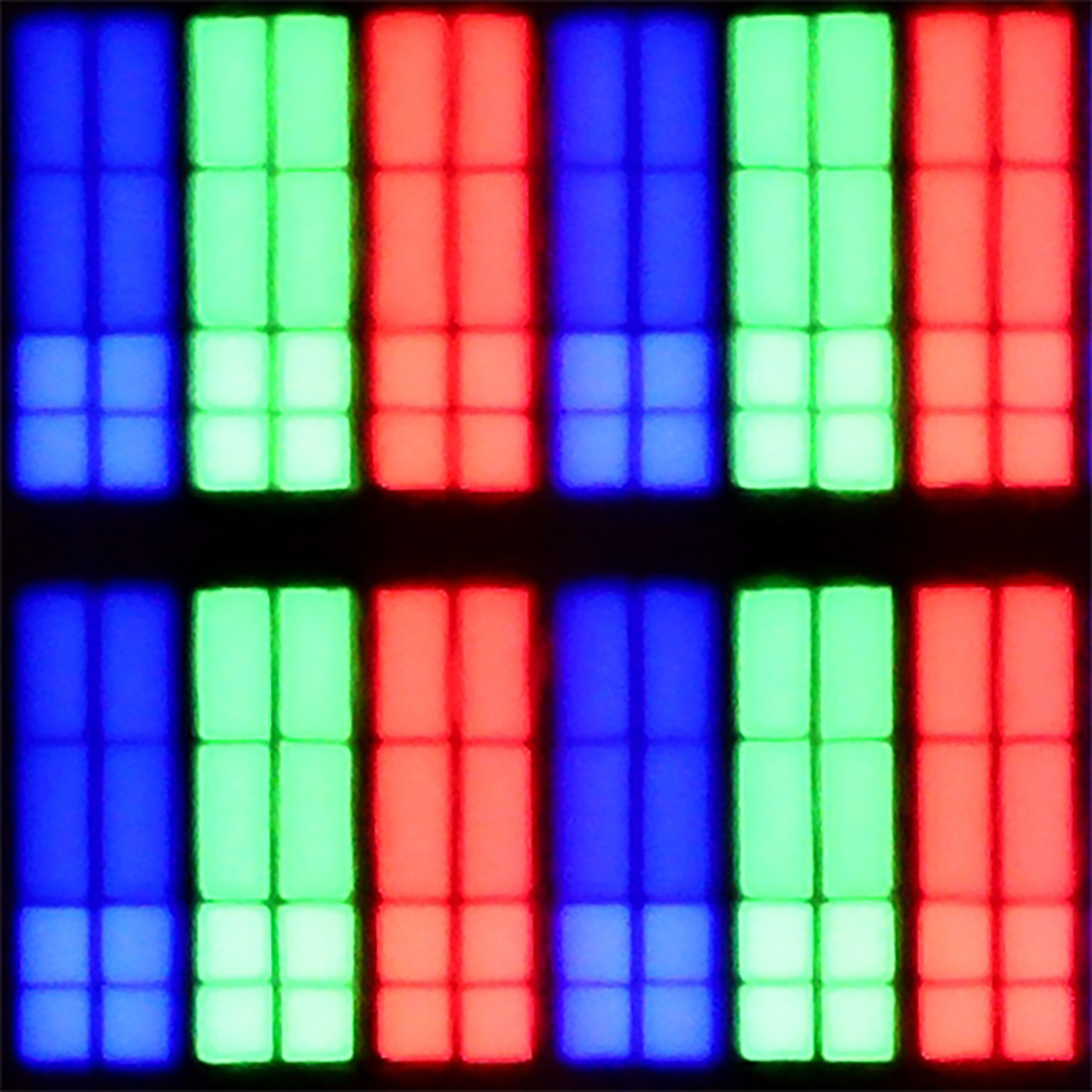
Panel uniformity:

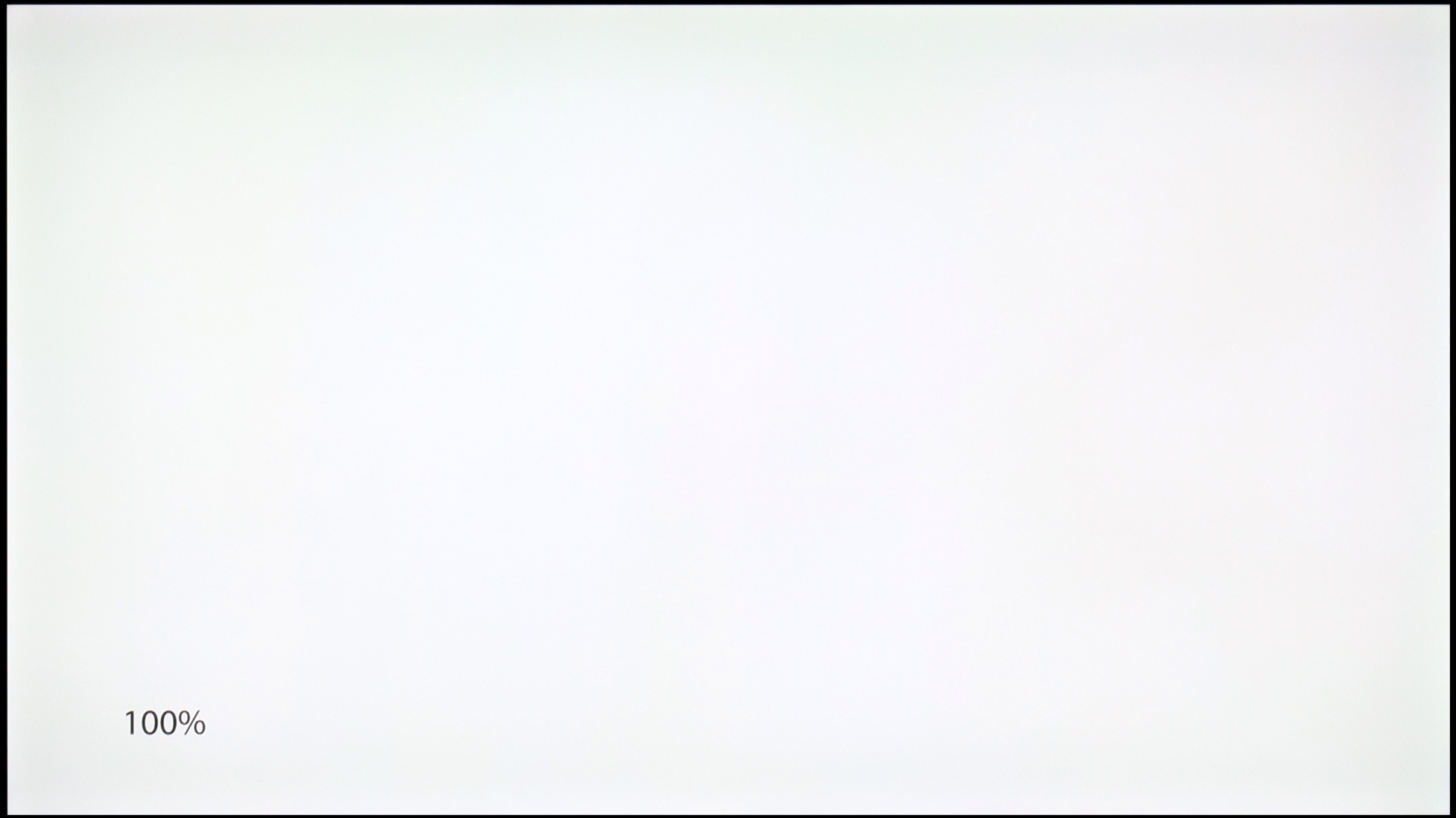
TCL A300W NXTVision
Hisense U7Q
TV features
7.5/10
8.9/10
- HDMI inputs2 x HDMI 2.0, 2 x HDMI 2.1 48Gbps2 x HDMI 2.0, 2 x HDMI 2.1 48Gbps
- Other inputsRCA (Chinch)
- OutputsToslink (Optical audio), eARC (HDMI), ARC (HDMI)Toslink (Optical audio), eARC (HDMI), ARC (HDMI), Mini-Jack (Headphones)
- Network InterfacesWi-Fi 2.4GHz, Wi-Fi 5GHz, Ethernet (LAN) 100MbpsWi-Fi 2.4GHz, Wi-Fi 5GHz, Ethernet (LAN) 100Mbps
- TV receptionDVB-T, DVB-T2, DVB-S, DVB-S2, DVB-CDVB-T, DVB-T2, DVB-S, DVB-S2
Classic features:
- Recording to USB (terrestrial TV)
- Recording programming
- Picture in Picture (PiP)
- RF remote control (no need to aim at the screen)
- Backlit remote control
- Teletext
- Audio only mode
- Possibility to connect Bluetooth headphones to the TV
- Possibility to simultaneously use Bluetooth headphones and the TV speaker
Smart features:
- AirPlay
- Screen mirroring (Windows Miracast)
- Wyszukiwanie głosowe
- Voice search in native language
- Ability to connect a keyboard and mouse




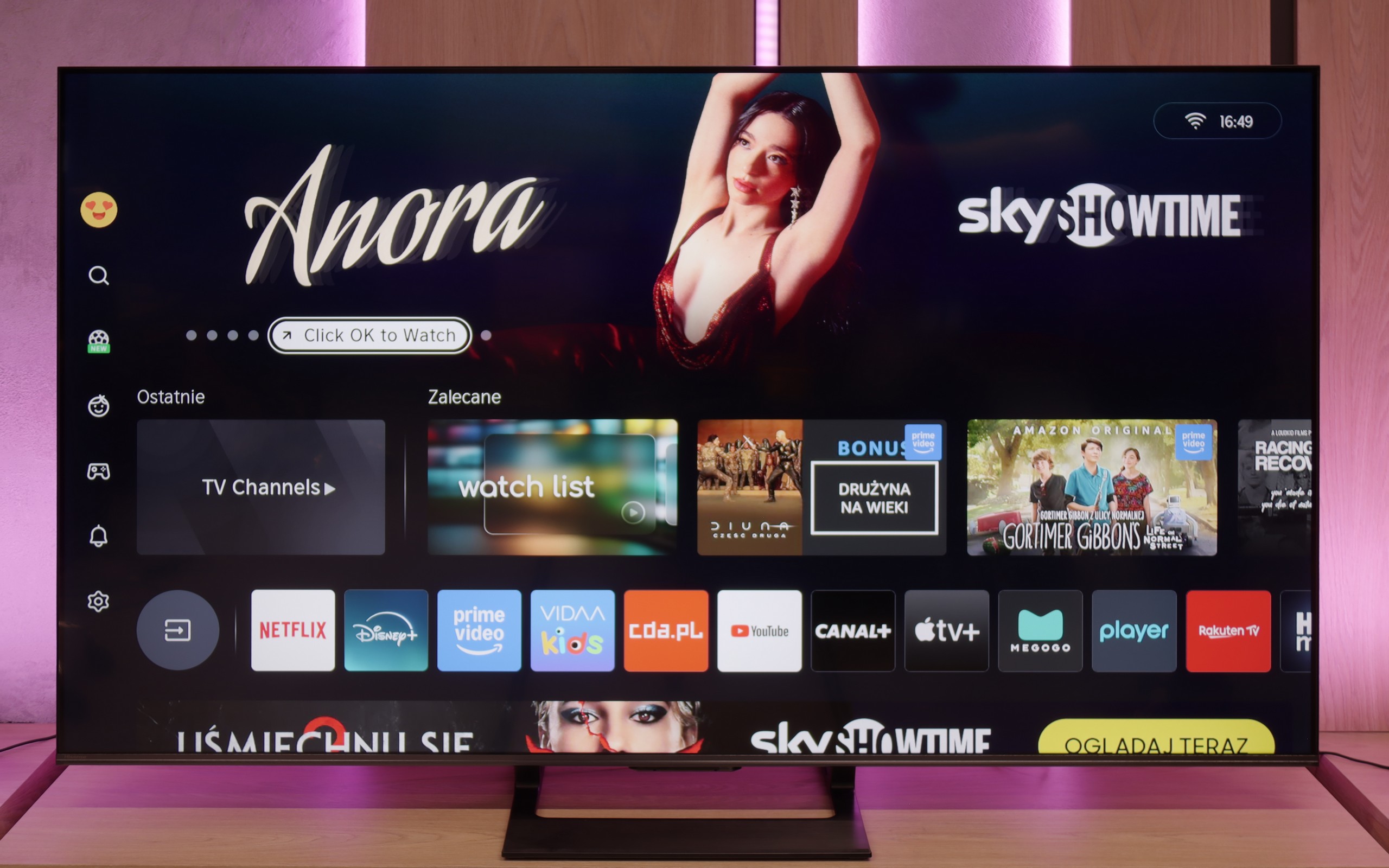

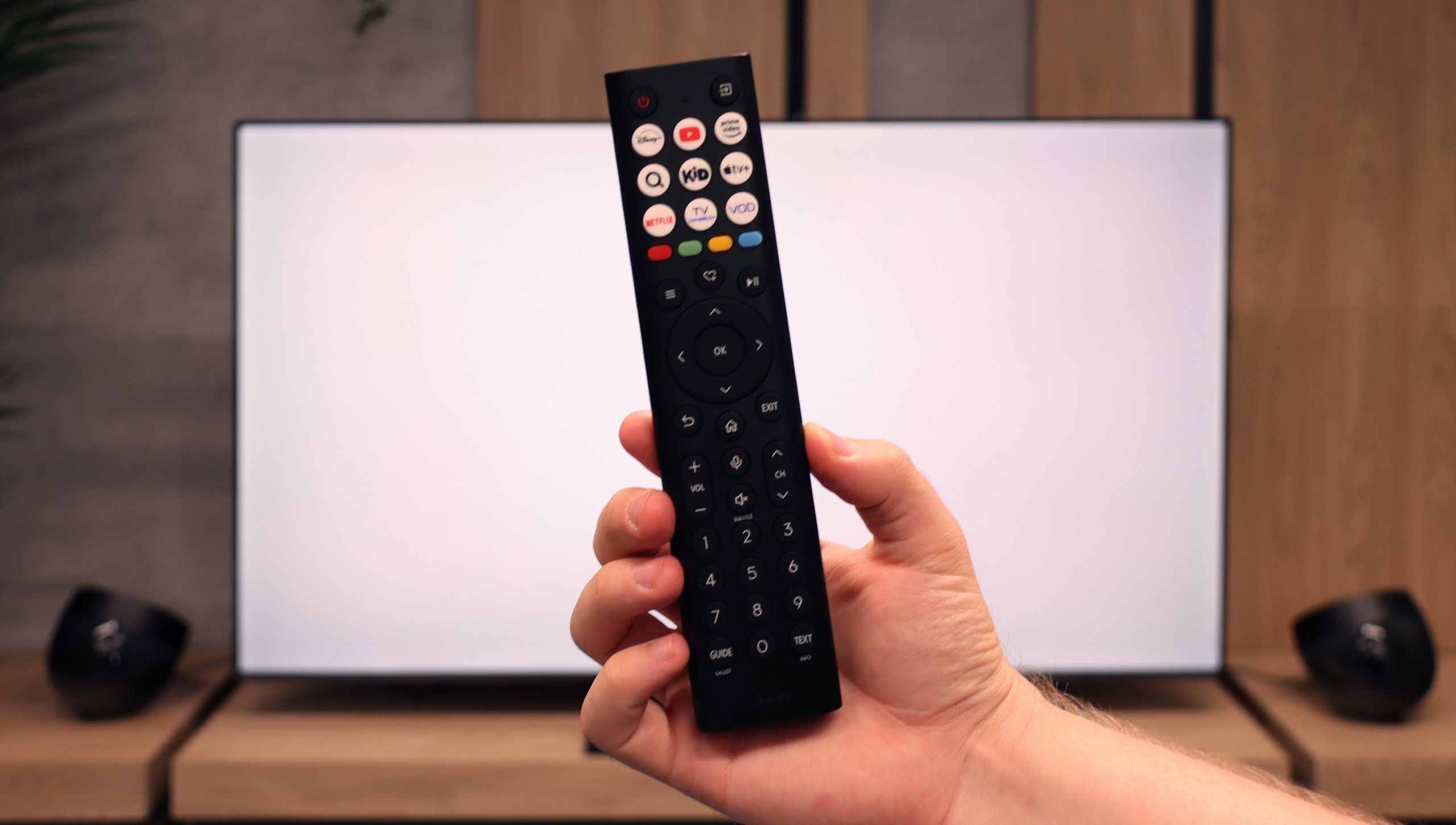
The TCL A300 is a television styled to resemble a painting, which can successfully masquerade as a work of art during everyday use, hanging on the wall. It is equipped with a special image display mode, additional frames in a light wood tone, and a flat wall mount that allows the television to be hung like a true picture – flush against the wall.
A significant advantage of the image mode is that it is completely free. We have access to dozens of works from which we can choose the one to be displayed in standby mode – instead of a black screen, the picture we selected remains on the wall. The quality of the graphic reproductions is decent, but it must be admitted that it clearly falls short of that from the Samsung ART Store. Although access to images there is paid, the quality of the scans is significantly better – you can see the texture of the paint, the canvas, and the details. In the TCL A300, it resembles high-quality photographs more than realistic reproductions of artworks. Additionally, the implementation of the image mode in the system leaves much to be desired. For example – if we set the brightness in image mode to 10%, that same value automatically transfers to the normal viewing mode, where we could comfortably set the brightness to 50% or even 100%. This works in the opposite direction too – when we set the brightness to 100% in normal mode, switching to gallery mode displays the images with that same maximum brightness, shining too intensely and losing the entire effect of a “picture on the wall.” These are minor but annoying errors that can ruin the experience of what was intended to be visually subtle and elegant.
Moving on to more classic features – the A300 runs on the Google TV system, which currently offers by far the largest selection of applications (the full list available below). The well-functioning voice assistant with support for the Polish language is also a major plus. As standard – as in most TCL televisions – the USB recording function or picture-in-picture (PiP) mode is missing.
Classic features of U7Q
Hisense U7Q has quite a lot to offer when it comes to classic TV features. You can record programmes to USB, connect external devices via Bluetooth without any hassle, and the interface – such as the EPG – is clear and easy to read. It may sound like something mainly appreciated by seniors, but the truth is that U7Q has practically everything needed for watching traditional television. The only thing missing here is the PiP (picture-in-picture) feature.
Smart TV U7Q: Vidaa
As for Smart features, the U7Q runs on the proprietary VIDAA system. And it must be admitted – it operates really smoothly. Voice search in Polish? No complaints. AirPlay and screen mirroring? They work without any issues as well. Of course, one must be aware that VIDAA is a closed system, so – as is often the case – it lacks some popular applications, especially those related to music. Therefore, before purchasing, it is worth checking whether all the applications you use regularly are available.
Playing files from USB
8.9/10
8.2/10
Supported photo formats:
Maximum photo resolution:


The built-in player in the TCL A300 works as it should – most popular video and photo files play without any issues. There is a lack of support for the HEIC format from Apple (which is quite common in many televisions), but most users still use AirPlay, so this shouldn't be a major problem. If someone is not satisfied with the default player, the Google TV system offers considerable options – it's easy to install an alternative app that better suits our tastes. Nevertheless, it must be acknowledged that the factory solution is entirely sufficient for everyday use.
The built-in player in the U7Q fully meets the needs of most future users. The television handles Polish characters effortlessly and supports most popular video, audio, and image formats. If we had to nitpick, it would only be about the limited support for certain image resolutions – there are instances when files from a camera are not displayed correctly. So it's worth keeping this in mind if you plan to present photos straight from a DSLR or phone.
Apps
9.6/10
7.7/10














































Sound
6/10
7.2/10
- Subjective sound quality:6/107.2/10
- Dolby Digital Plus 7.1:
- Dolby True HD 7.1:
- Dolby Atmos in Dolby Digital Plus (JOC):
- Dolby Atmos in Dolby True HD:
- DTS:X in DTS-HD MA:
- DTS-HD Master Audio:
When it comes to sound, the TCL A300W – like its competitors – plays quite... flat, after all, we are talking about a super flat television. For everyday watching of news or series, this level is entirely sufficient, but during film screenings, we may clearly miss depth and space. On the plus side, it is worth noting that the television supports both Dolby Atmos and the increasingly rare DTS:X – which offers more options when connecting an external audio system. It is also worth mentioning that the A300 PRO model has been equipped with a dedicated, flat soundbar. And not just any soundbar – it performs better than most of the televisions we have tested.
Sound is one of the bigger advantages of the U7Q. The television sounds really pleasant – there is a slightly noticeable bass, good tone balance, and definitely something more than just for "daily news watching." You can easily play music on it and simply sit back and enjoy the sound – of course in an entertaining form, not an audiophile one 😉. Full support for the most important audio codecs also deserves a big plus, as they worked flawlessly. A small exception is Dolby Atmos in TrueHD version, which didn’t fully play when connected to the home cinema, so if someone uses this format – it’s worth keeping in mind – it might be a software issue.


